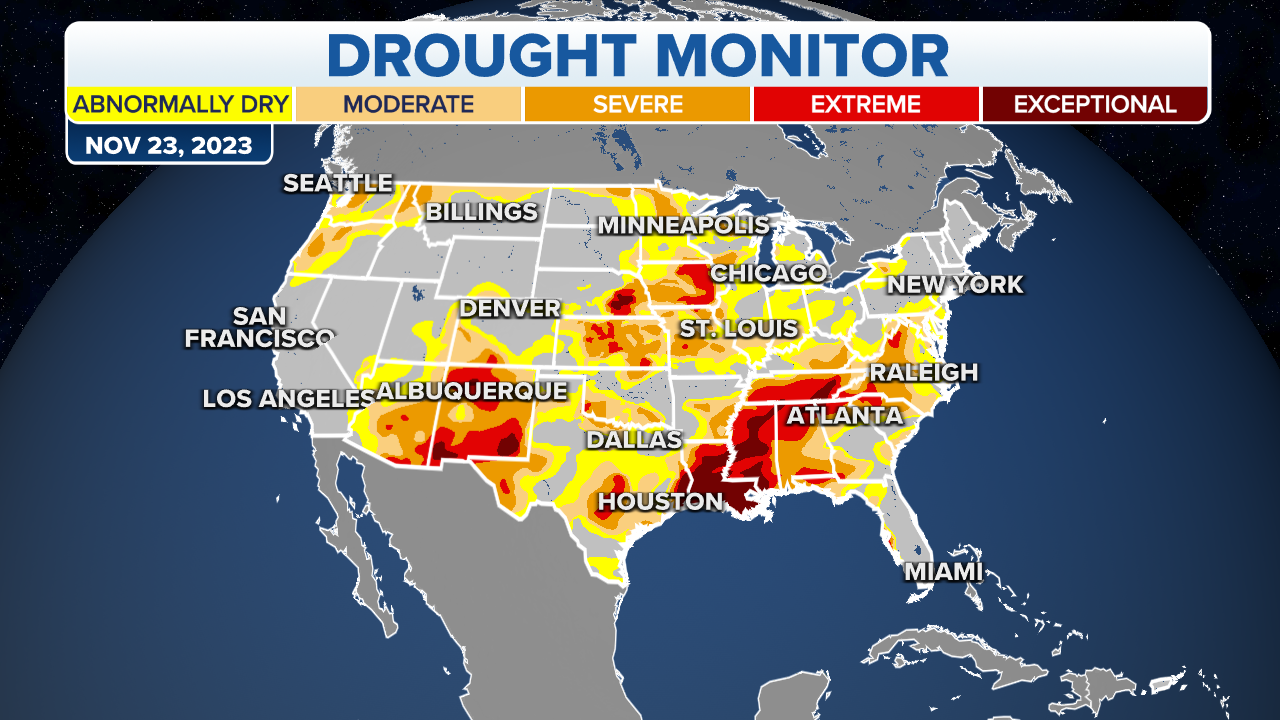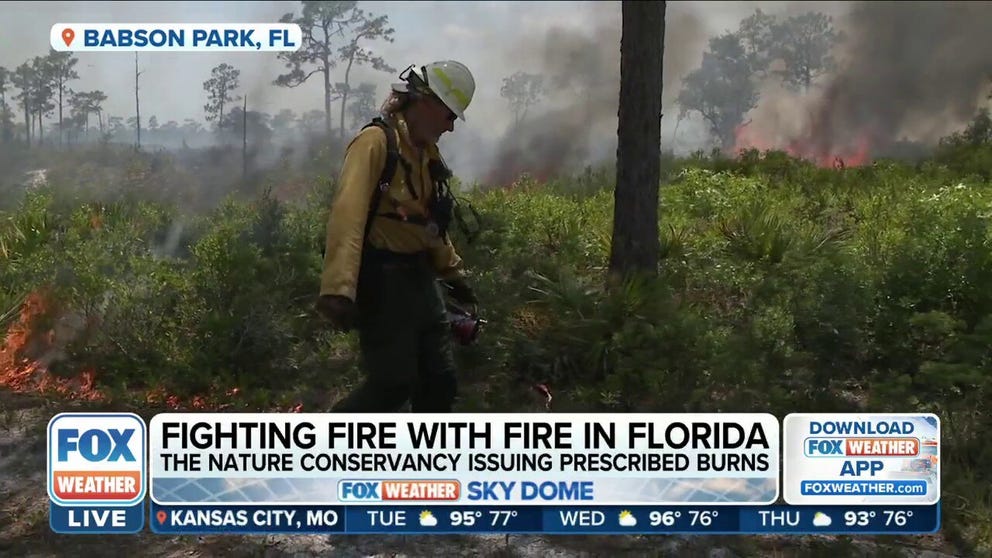Wildfires grow in Florida amid intensifying drought
Major cities such as Jacksonville, Orlando, Tampa and Miami have seen below-normal precipitation in 2023. According to the U.S. Drought Monitor, 87 percent is experiencing abnormally dry conditions, with more than half the state in moderate drought status.
Some land is purposefully burned to protect it from future wildfires in Florida
In Florida, some land is purposefully burned in order to protect it from future wildfires and rejuvenate land for native vegetation and animals. FOX Weather gets a first-hand look at the prescribed burn on the Nature Conservancies Tiger Creek Preserve as grasses and fire fuels went in flames.
A dry start to 2023 in the Sunshine State has kept fire crews busy as conditions become more conducive for wildfires throughout the Peninsula.
As of early March, the Florida Forest Service reported monitoring some 80 fires that have burned nearly 3,500 acres.
Two of the larger fires were burning in Marion and Hendry counties, where the combination of winds and dry bush helped to fan the flames and force temporary road closures.
Seeing fires in the state can be common during the winter and spring but seeing so little precipitation during the first months of the year has the FFS concerned that the worst could still be ahead.
Major cities such as Jacksonville, Orlando, Tampa and Miami all have seen below-normal precipitation as the state prepares to enter what are historically the driest months – April and May.
SEE THE MASSIVE ALLIGATOR FOUND LURKING IN A SOUTH FLORIDA SWAMP
Data from the U.S. Drought Monitor showed 87 percent of the state is experiencing abnormally dry conditions, with more than half in moderate drought status.
Usually, during a moderate drought, some crops start to experience damage, and the fire risk becomes high.

Hurricanes Ian and Nicole produced brief periods of heavy rainfall in the state during the fall, but agencies are concerned that the downing of vegetation by winds could help add fuel to fires.
Significant tropical cyclones in Florida have historically contributed to dead trees and vegetation, which can quickly burn during wildfires.
Firefighters battled dozens of blazes in the Florida Panhandle in 2022 that were attributed to debris left behind by Hurricane Michael in 2018.
FLORIDA EXPECTED TO BE A HOTBED FOR WILDFIRES IN EARLY 2023
Outlooks from the National Interagency Fire Center show the continued threat for above normal fire activity is expected to continue for the Florida Peninsula and the Georgia coast through at least May.
"Drought has recently been expanding across Florida, but water levels in lakes and swamps are still elevated from Hurricanes Ian and Nicole. This may be enough to continue quelling wildfire activity in the short-term, but model guidance strongly supports warmer and drier than normal weather in Florida through late spring, which has the potential to affect the Florida Panhandle into southern Georgia as well. This implied excess evaporative demand combined with widespread Keetch-Byram Drought Indices (KBDIs) above 600 already in place, are expected to bring above normal significant fire potential to Florida and coastal Georgia in March and April, with above normal potential maintained there in May due to the typical increase in lightning ignitions experienced at the beginning of the convective season," the NIFC wrote in its latest outlook.
Not all smoke is from Florida fires
A southerly flow has occasionally brought hazy skies and smoky conditions from large fires burning in Cuba.
The United Nations Office for the Coordination of Humanitarian Affairs reports the island nation of more than 11 million residents has been affected by at least 80 wildfires that have burned around 5,000 acres since January.
Some of the vegetation that is burning is reported to be from sugarcane fields, which are significant contributors to the Cuban economy.
Plumes of smoke have been visible on radar imagery 90 miles away in Key West and satellite animation has shown the influx of hazy skies from the island nation.
PLANNING A MOVE TO THE FASTEST-GROWING STATE IN 2023? THIS IS THE WEATHER TO EXPECT BEYOND SUNSHINE
Cuban President Miguel Díaz-Canel has been monitoring the fires and tweeted words of encouragement to the islands’ first responders and evacuees.
The UN said data from the Global Wildfire Information System showed no sign of drought relief for the nation. High to extreme fire risk levels for many provinces are expected to continue through March.




